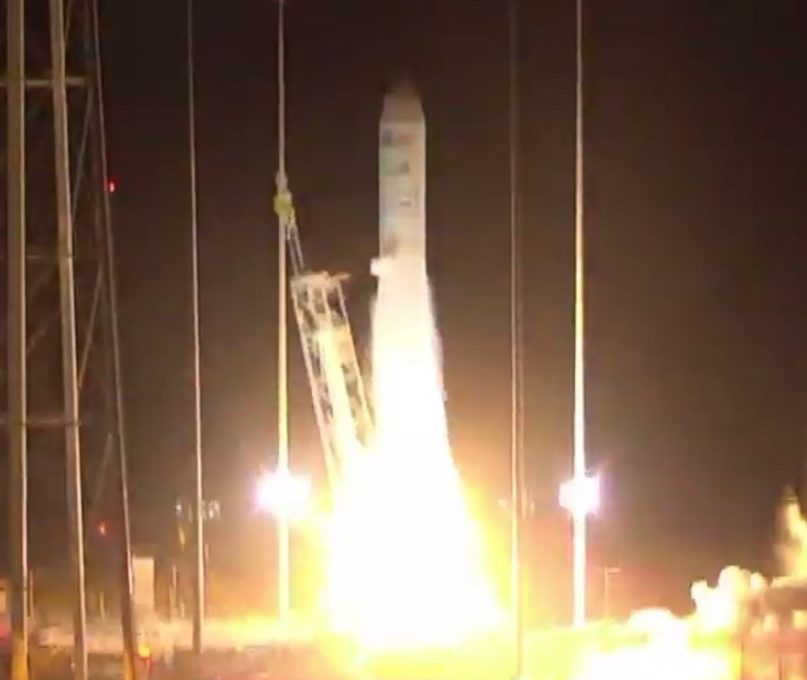Orbital ATK’s Antares two-stage rocket sent a robotic Cygnus cargo spaceship on its way to the International Space Station today, nearly two years after a launch pad failure forced an engine overhaul.
The rocket, manufactured by Orbital ATK, is carrying roughly 5,100 pounds of cargo in the Cygnus spacecraft. It is meant resupply the International Space Station (‘ISS’). It took off at 7:45 p.m., just five minutes past its intended flight time of 7:40 p.m.
According to NASA, the unmanned rocket had entered space as 7:55 p.m., with Stage 1 separation occurring at 7:49 p.m. This was followed by a Stage 2 burnout at 7:53 p.m.
At a press conference after the launch, Frank Culbertson, president of Orbtial ATK’s Space Systems, referred back to October 2014 when an Antares rocket last launched from Wallops Island. The rocket, also carrying thousands of pounds of cargo to the ISS at the time, exploded seconds after lift-off and resulted in 15 million dollars worth of repairs to the launchpad.
According to Culbertson, Monday’s mission required absolute confidence from the crews.
“As we got into the last ten minutes of the countdown, they were going through things very carefully and the launch conductor decided he wanted to take just a little bit extra time and make sure we didn’t skip anything, miss anything, make any mistakes,” explains Culbertson.
Monday’s launch marked the largest payload aboard a Cygnus spacecraft to fly from Wallops Island.
According to Culbertson, Cygnus will have to hang around in orbit until Sunday morning before making the delivery. This will give three astronauts time to launch from Kazakhstan and get to the station.
There are also a number of experiments that are a part of this mission, including Saffire II. The purpose of that mission is test how flames and fire grow in space.
Orbital ATK says they have six more missions planned to launch from NASA’s Wallops Island Flight Facility in the future.
Maxine J. Martin
Lift off! @OrbitalATK's #Antares rocket launches to deliver science & supplies to @Space_Station. Keep watching: https://t.co/KX5g7zfYQe pic.twitter.com/OIbREmBJg1
— NASA (@NASA) October 17, 2016













